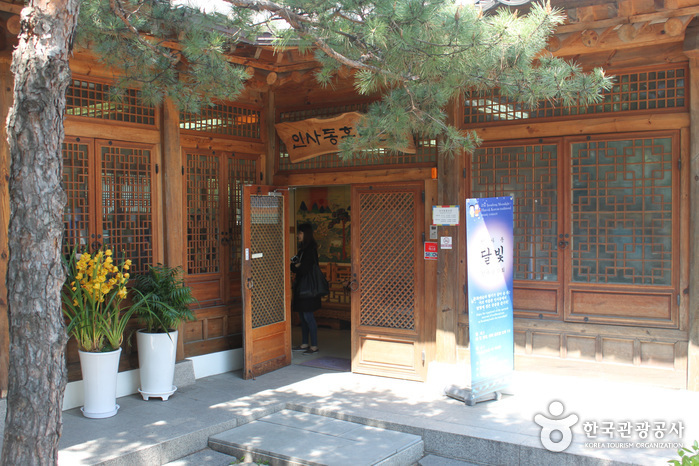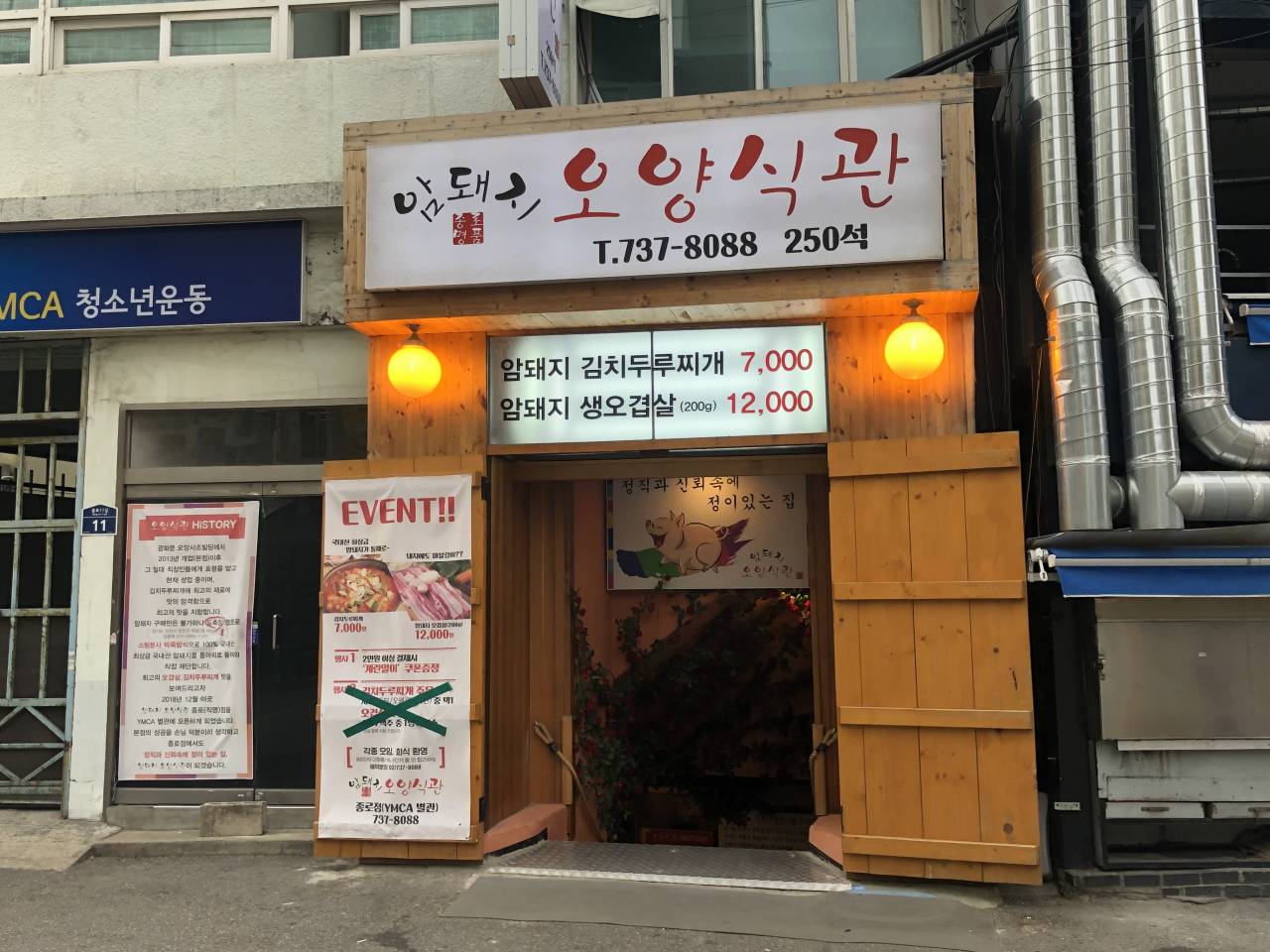Insa-dong PR Center (인사동홍보관)
1.9Km 2017-07-26
19 Insadong 11-gil, Jongno-gu, Seoul
+82-82-737-7890~1
Insa-dong PR Center opened in 2006 with the goal of providing
accessible education for both domestic and international visitors to understand Korean traditions and history. It was built in what was once the private residence for Prince Uichin (1877-1955), one of the sons of Emperor Gojong (1852-1919).
Insa-dong PR Center also introduces the traditions and culture of Insa-dong, and provides tour pamphlets and tourist assistance in multiple languages (English, Japanese and Chinese). Visitors can try on hanbok (traditional costumes) and enjoy Wi-Fi within the facility.
Harmony Mart - Insa Branch [Tax Refund Shop] (하모니마트 인사)
1.9Km 2024-04-17
1F (Gwanhun-dong), 38, Insadong 5-gil, Jongno-gu, Seoul
-
Samcheong-dong Street (삼청동길)
1.9Km 2025-01-22
107 Samcheong-ro, Jongno-gu, Seoul
It is said that Samcheong-dong was named from the story about the three "cheong" (Chinese character meaning clean) of the area, namely the mountain, water, and people. Another theory is that the origin of the region's name came from Samcheongjeon Hall where three tablets called "Taecheong," "Sangcheong," and "Okcheong," were set up based on Taoism. Samcheong-dong Street features a mixture of old scenes of hanok buildings with traditional beauty and modern scenes of galleries and cafés, creating a unique atmosphere. Visitors can feel the abundant cultural mood at every corner of the street through the art galleries, museums, antique shops, and quiet pathways.
Amdwaeji Oyangsikgwan (암돼지오양식관)
1.9Km 2021-03-19
11, Jong-ro 11-gil, Jongno-gu, Seoul
+82-2-737-8088
A barbecue specialty restaurant located in Jongno, Seoul. The most famous menu is grilled pork belly. Skin-on pork belly is actually the same as grilled pork belly BBQ.
Imun Seolnongtang (이문설농탕)
1.9Km 2025-06-18
38-13 Ujeongguk-ro, Jongno-gu, Seoul
+82-2-733-6526
Imun Seolnongtang has been serving its hearty seolleongtang for over a hundred years since it first opened in 1907. Even its name has a long history: the word imun comes from Imun-gol, the now-obsolete name of the restaurant’s location, and seolnongtang, an old variation of the word seolleongtang. During the Japanese colonial rule, the restaurant’s regular customers included Gijeong Son, the marathon gold-medalist at the 1936 Berlin Olympics. The meal served at this restaurante is reputed to stay consistent from the Japanese colonial period.
Balwoo Gongyang (발우공양)
1.9Km 2024-01-05
56 Ujeongguk-ro, Jongno-gu, Seoul
Balwoo Gongyang, located in front of the main gate of Jogyesa Temple, is a temple food restaurant operated by the Cultural Corps of Korean Buddhism. It was selected as a 1-star restaurant by the Michelin Guide for three consecutive years from 2017 to 2019 and it is so popular that reservations must be made a month in advance. “Balwoo” refers to meals for monks and it means that the act of eating is also a process to realizing the truth. The restaurant offers five types of course menus inspired by Buddhist teachings that are served in the order of Suljuksim, Juksang, Sangmi (嘗味), Dammi (噉味), Seungso (僧笑), Youmi (愈味), and Ipgasim. The menu is made with seasonal ingredients to bring out the best flavor of each season. The course meal starts with appetizing kimchi stew according to the traditional Korean meal culture. Then it is followed by porridge, seasonal salad, rice and stew, side dishes, tea, and dessert, satisfying both the taste buds and health. Those who wish to experience an authentic temple meal are recommended to try the Beop Course.
Templestay Information Center (템플스테이 홍보관)
1.9Km 2022-10-17
56, Ujeongguk-ro, Jongno-gu, Seoul
+82-2-2031-2000
Templestay Information Center offers various information and services regarding templestays and temple meals for domestic and international visitors. The center also operates traditional cultural experiences, such as tea time with a Buddhist monk, traditional culture activities and more.
CU - Sungin Dongyang Paraville Branch [Tax Refund Shop] (cu숭인파라빌점)
1.9Km 2024-06-26
1F, #104, 251, Nangye-ro, Jongno-gu, Seoul
-
Hoopcity Dongdaemun [Tax Refund Shop] (HOOPCITY 동대문)
1.9Km 2024-04-18
1F, 324, Toegye-ro, Jung-gu, Seoul
-
Olive Young - Jongno Branch [Tax Refund Shop] (올리브영 종로점)
2.0Km 2024-06-27
1F, 78, Jong-ro, Jongno-gu, Seoul
-

![Harmony Mart - Insa Branch [Tax Refund Shop] (하모니마트 인사)](http://tong.visitkorea.or.kr/cms/resource/79/2888079_image2_1.jpg)


![Hoopcity Dongdaemun [Tax Refund Shop] (HOOPCITY 동대문)](http://tong.visitkorea.or.kr/cms/resource/51/2878751_image2_1.jpg)
 English
English
 한국어
한국어 日本語
日本語 中文(简体)
中文(简体) Deutsch
Deutsch Français
Français Español
Español Русский
Русский